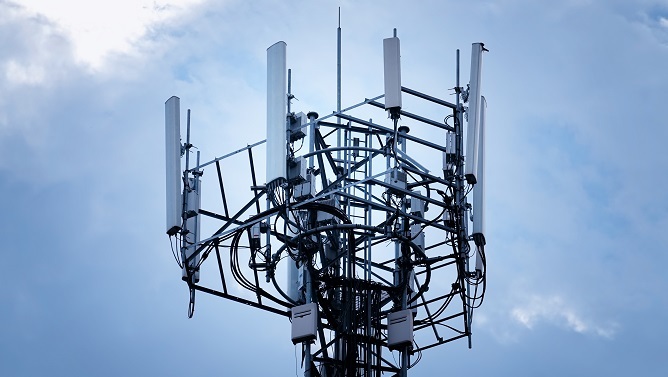
 Data Structure
Data Structure Networking
Networking RDBMS
RDBMS Operating System
Operating System Java
Java MS Excel
MS Excel iOS
iOS HTML
HTML CSS
CSS Android
Android Python
Python C Programming
C Programming C++
C++ C#
C# MongoDB
MongoDB MySQL
MySQL Javascript
Javascript PHP
PHPPhysics
Chemistry
Biology
Mathematics
English
Economics
Psychology
Social Studies
Fashion Studies
Legal Studies
- Selected Reading
- UPSC IAS Exams Notes
- Developer's Best Practices
- Questions and Answers
- Effective Resume Writing
- HR Interview Questions
- Computer Glossary
- Who is Who
What is the full form of ETDMA?
Introduction
Extended Time Division Multiple Access (ETDMA) is a communication technique employed by the mobile communications systems employ. It is a multiple-access technique that divides time into frames and allots time slots to different users, allowing numerous users to share the same wavelength band.

ETDMA (Extended Time Division Multiple Access) allows for more flexible resource allocation than typical TDMA (Time Division Multiple Access), where all time slots have a predetermined duration. This implies that ETDMA can give customers that need more bandwidth or capacity more time slots while giving few time slots to those who need few of the same.
Definition of ETDMA
Extended Time Division Multiple Access is referred to as ETDMA. It is a multiple-access technique used in mobile communication systems that divides time into frames and allots time slots to different users, allowing numerous users to share the same frequency band.
ETDMA (Extended Time Division Multiple Access) allows for more flexible resource allocation than typical TDMA (Time Division Multiple Access), where all time slots have a predetermined duration. A reliable and effective technique, ETDMA enables the effective utilization of wireless spectrum resources.
Working principle of ETDMA
ETDMA operates based on giving time slots to specific users after splitting the day into frames. The duration of each time slot can be dynamically changed depending on the user's demands. The frames are normally divided into a predetermined number of time slots.
The ETDMA system gives users time slots according to their communication requirements. Users who need more capacity or bandwidth are given more time slots, while users who need less are given fewer slots. To provide each user ample time to submit their data, the system modifies the length of each time slot.
The user is authorized to send data throughout each time window. The data is sent via a particular frequency channel within the user-allocated frequency range. Commonly, this frequency channel is shared with additional users who have been given time slots within the same block.
To make sure that all users are synchronized and delivering data at the same time, the ETDMA system employs a synchronization signal. This aids in avoiding interference and guarantees accurate data transmission.
Overall, the ETDMA operating concept is based on dividing time into frames and assigning time slots to specific users per their communication requirements. To guarantee effective use of the resources available, the duration of each period is dynamically changed.
Advantages of ETDMA
ETDMA has several benefits over other protocols with multiple access, like TDMA and FDMA. The following are some of the key benefits of ETDMA −
Efficient use of resources − ETDMA dynamically adjusts the length of intervals based on the communication requirements of each user, allowing for optimal use of the available frequency spectrum. This makes sure that customers who need more bandwidth are given more time slots, and users who need less are given fewer slots.
Increased capacity − ETDMA supports more users per frequency band than other multiple access methods because it provides a more flexible resource allocation.
Better coverage and range − Because ETDMA uses the available frequency spectrum better than other multiple-access schemes, it can offer better coverage and range.
Less interference − ETDMA employs a synchronization signal to ensure that everyone is broadcasting simultaneously, reducing interference and guaranteeing accurate data transmission.
Better multimedia application support − ETDMA is well suited for supporting multimedia applications like video streaming and conferencing, which require more bandwidth and capacity.
Compatible with existing systems − With TDMA and GSM systems already in use, ETDMA makes it simpler to incorporate into current mobile communication networks. ETDMA is vital to contemporary mobile communication networks because it is a reliable and effective multiple-access method with various benefits over other multiple-access systems
Applications of ETDMA
Several wireless communication systems use the communication technology known as ETDMA (Extended Time Division Multiple Access). It is used in a variety of applications, such as −
Mobile communication − Because ETDMA empowers a few clients to share a solitary recurrence band and utilize the accessible assets, it is regularly utilized in portable correspondence frameworks, for example, those seen in 2G, 3G, and 4G organizations.
Wireless LANs − ETDMA is utilized in wireless local area networks (WLANs), like Wi-Fi, since it enables several users to share a single frequency band and ensures resource efficiency.
Cordless phones − To increase range and coverage while allowing several users to use the same frequency band, ETDMA is used in cordless phones like DECT (Digital Enhanced Cordless Telecommunications).

Industrial automation − ETDMA is utilized in industrial automation systems such as wireless sensor networks to facilitate effective communication between sensors and control systems.
Satellite communication − ETDMA is a technology used in satellite communication systems that allow several users to share the available bandwidth and increase communication efficiency.
Public safety communication − ETDMA is used in open security correspondence frameworks, for example, those utilized by police and local groups of firefighters, to assist crisis responders with discussing various issues with each other.
Conclusion
Wireless communication systems employ ETDMA, a multiple access strategy, to effectively use the available frequency spectrum. It splits time into frames and allots time slots to specific users following their communication requirements, enabling flexible resource allocation and enhanced capacity. Mobile communication, wireless LANs, satellite communication, and safety-related communication are just a few areas where ETDMA is used.
FAQs
Q1. What function does synchronization provide in ETDMA?
To eliminate interference and guarantee that the data is transferred correctly, synchronization—a crucial part of ETDMA—ensures that all users deliver their data simultaneously. To keep all users synchronized, ETDMA employs a synchronization signal.
Q2. How can ETDMA enable applications for multimedia?
Multimedia applications that need more bandwidth and capacity, such as video streaming and video conferencing, are well supported by ETDMA. ETDMA makes it possible for more flexible resource allocation, which enables it to give customers that need greater bandwidth more time slots, effectively supporting multimedia applications.
Q3. Are ETDMA and current communication methods compatible?
ETDMA is compatible with TDMA and GSM systems, which are already in use, making it simpler to incorporate into existing mobile communication networks.

